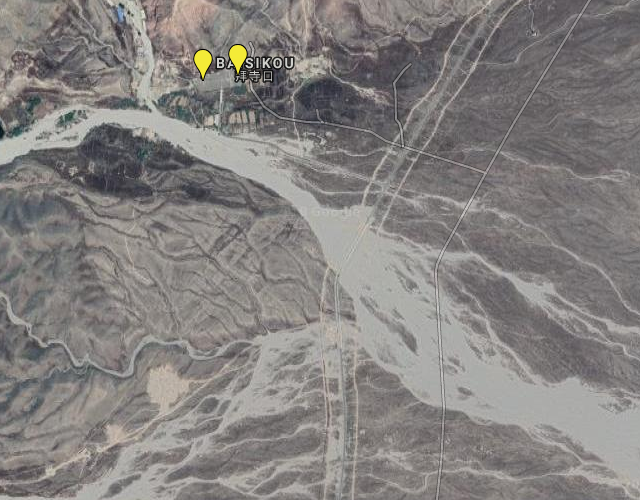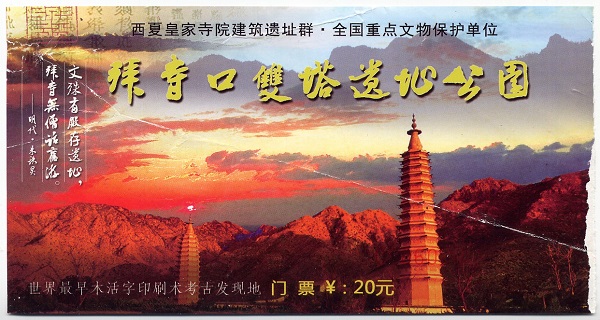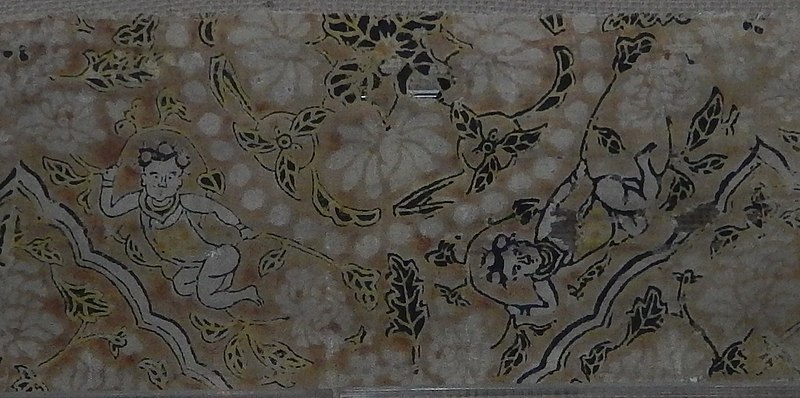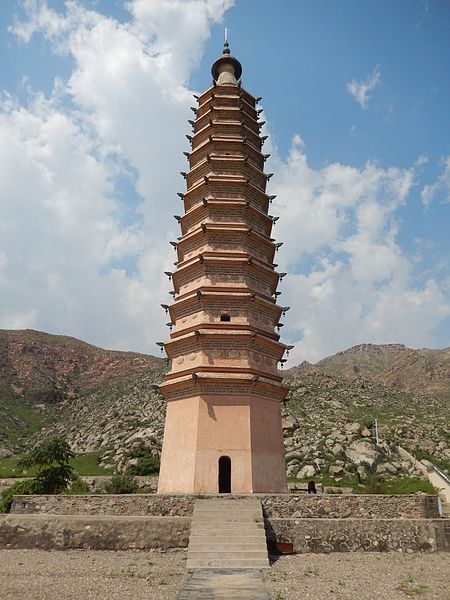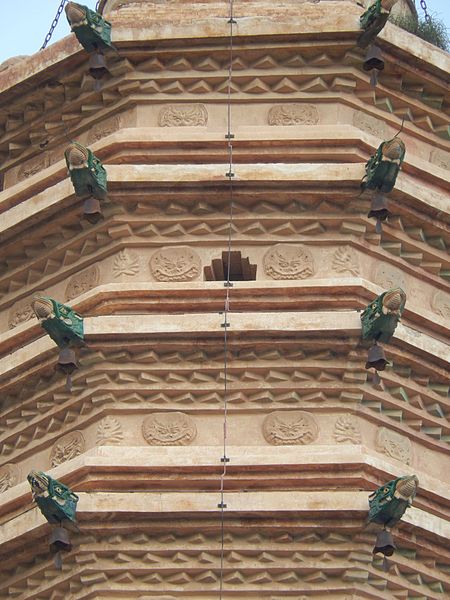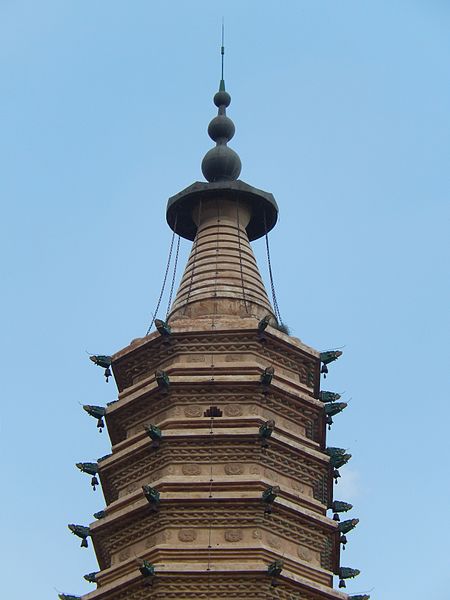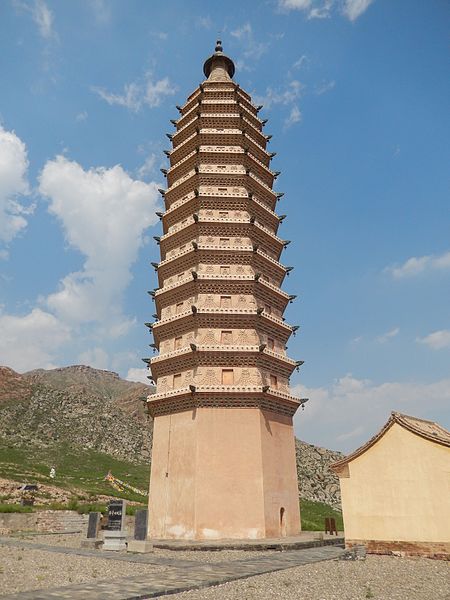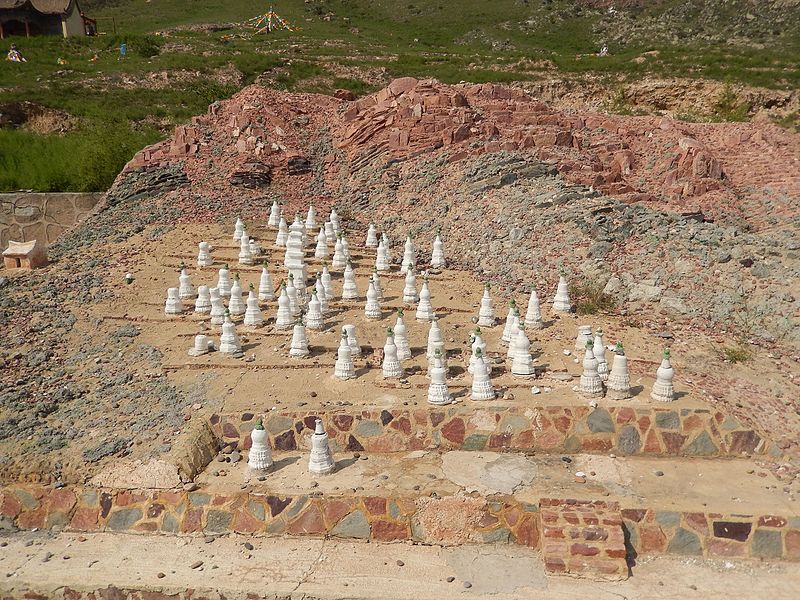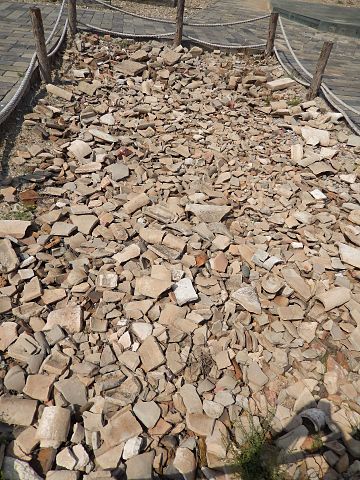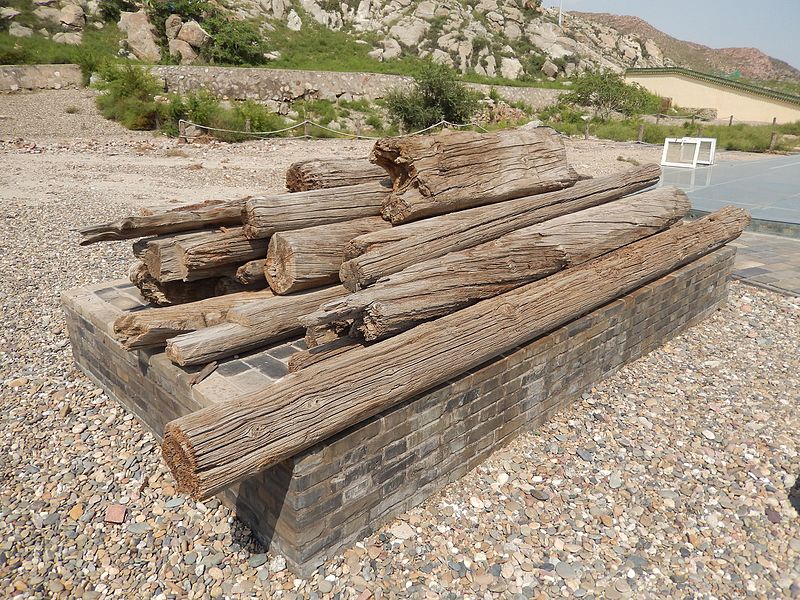Diary of a Rambling Antiquarian
Tuesday, 30 August 2016
Baisikou Twin Pagodas
After spending all morning revisiting the Western Xia mausoleums, I am keen to head off to the next site of interest before it gets too late. I have hired a tourist taxi for the day, and I tell the driver that I now want to go to see the Twin Pagodas at Baisikou (拜寺口雙塔), by the mouth of the Baisigou valley (拜寺沟) that leads into the heart of the Helan Mountains. I am not sure how long it takes to get there, but it does not look too far on the map. It turns out that either the map is deceptive or my ability to read maps is not up to scratch.
On the Road
It's about 35 km by road, and after about half an hour's drive we stop to pick handfuls and pocketfuls of very sour unripe peaches from the roadside at Huangqikou (黄旗口), which is about 7 km from Baisikou. My driver forces a huge handful on me to eat, although I find it difficult to enjoy them with quite as much relish as he does.
Picking unripe peaches by the side of the road
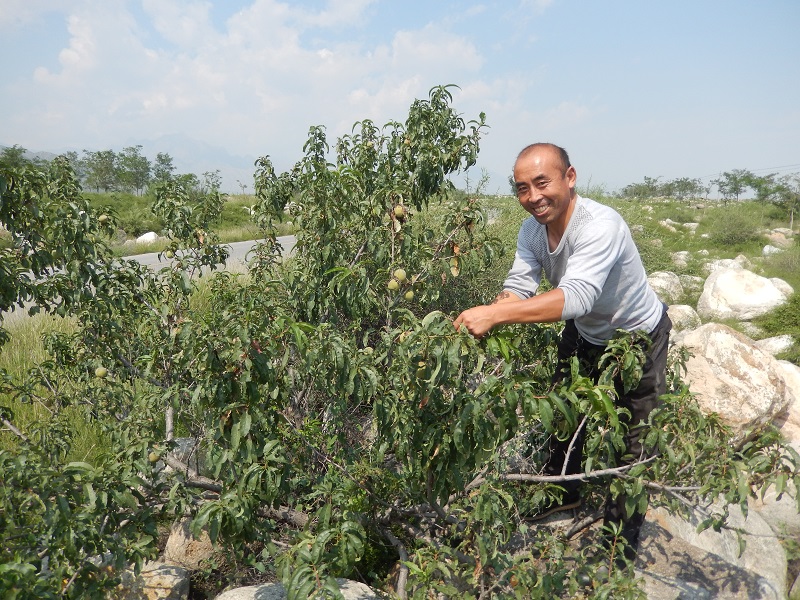
As we near our destination, I begin to appreciate the enormity of the flash floods that last week cancelled our excursion to the twin pagodas. Baisikou is at the mouth of one of a series of narrow valleys that run eastwards out of the Helan Mountains and onto the adjacent plain. Normally these are dry valleys, but when it rains heavily, as it did last week, the valleys turn into torrents of unstoppable water which sweep away anything in their path. The floods of last week had swept alluvial debris, huge boulders, trees, and even machinery across the only road to Baisikou, leaving the road covered to a depth of two or three metres. The road has been roughly cleared now, but the severity of the floods can easily be imagined as we drive through the narrow road with debris piled up on both sides.
Location of Twin Pagodas at Baisikou
{Map data ©2018 Imagery ©2018 CNES / Airbus, DigitalGlobe}
The debris flow sweeps across the road that runs north to south along side the Helan Mountains.
Passing through alluvial debris on the road near Baisikou
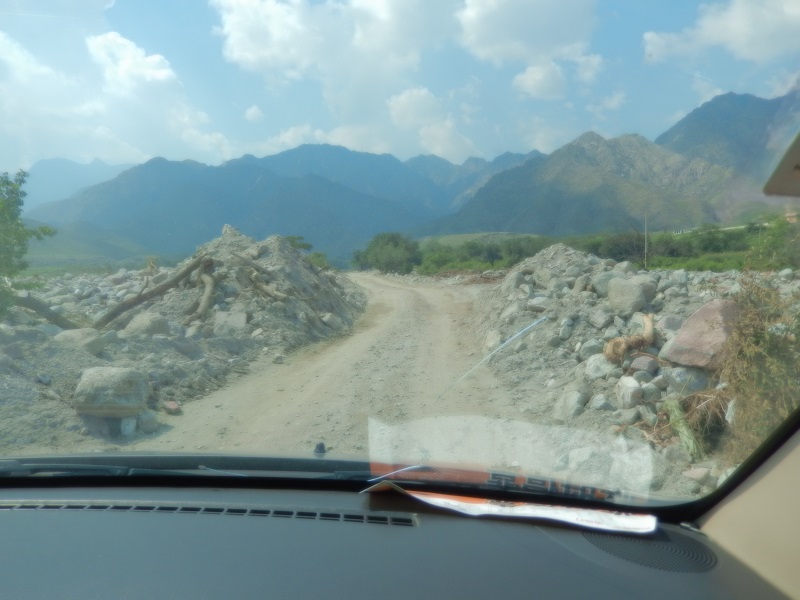
This photo was taken approaching Baisikou, heading north.
Passing through alluvial debris on the road near Baisikou
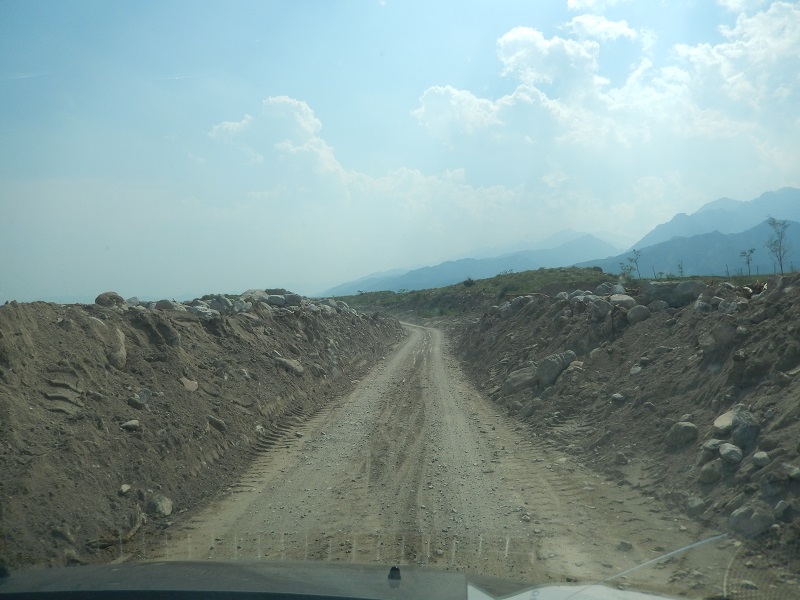
This photo was taken after leaving Baisikou, heading south.
When we arrive at the twin pagodas I accidentally put my camera in a soft focus mode, and it is fifteen minutes and thirty photos later before I realise what I have done. The photos I took of the pagodas are useless, and I have to retake all my photos. At least I realised before it was too late!
View of Twin Pagodas from the road

In soft focus mode!
At the Twin Pagodas
When we arrive at Baisikou there are no other visitors to the pagodas, and for most of the time we have the place to ourselves (I bought my driver an entrance ticket).
Approach to the twin pagodas
Photo taken on the way out as the photos I took going in are useless.
Entrance ticket for the Twin Pagodas of Baisikou
The two pagodas, 80 metres apart, were built at some unknown date during the Western Xia period on the grounds of a large Buddhist monastery that guarded the entrance to the Baisigou valley, along which there were other Western Xia Buddhist sites and temples. The name Bàisìgōu (拜寺沟) means "valley for paying homage to the temple", but it has been suggested that this name is a corruption of Bǎisìgōu 百寺沟 meaning "valley of a hundred temples", as there were reputed to be a hundred and forty-four Buddhist temples in the valley — or at least this number of Buddhist structures, including pagodas and stupas.
Now only the pagodas are still standing, although they were both extensively restored in 1986. During restoration of the west pagoda, a room at the base of the pinnacle was discovered, in which were found various relics, including six pieces of paper with hand-written Tangut text; seven pieces of paper with Sanskrit mantras printed in red ink; two Buddhist paintings on silk; two Yuan dynasty bank notes of the Zhongtong era; a wooden statue of a playful manifestation of a vajra protector; and some pieces of silk. Other objects discovered in the west pagoda include a wooden table and a wooden chair, and a pair of carved wooden vases with silk flowers.
Piece of printed silk from the west pagoda
Playing babies and lotus flowers design (嬰戲蓮紋絹)
East Pagoda
The East Pagoda is an octagonal thirteen-storied brick pagoda with a hollow core. It is 39 metres in height (including the restored finial), with a ground floor height of 5.7 metres. There is an entrance at the south to the interior, but the cavity is blocked off near the base by a round wooden door. Levels 2 through 13 have moulded sculptures of fierce animal masks, and at each corners of the eaves there is green-glazed kirtimukha animal head from which a bell hangs.
View of East Pagoda from the hillside
East Pagoda from the south
Glazed water spouts and moulded decoration on top levels
Moulded decoration on lowest level
Pinnacle of east pagoda
West Pagoda
The West Pagoda is also an octagonal thirteen-storied brick pagoda with a hollow core. It is 41 metres in height. There is a small temple hall bult during the Qing dynasty opposite the south face. A narrow doorway leading into the hollow interior, which is not blocked off, but could only be ascended with a ladder (which would have to be built inside the pagoda as it could not fit through the entrance).
The moulded decoration on the west pagoda is similar to that on the east pagoda, but each panel also has a niche for a sculpture of a Buddhist figure or Buddhist symbol. There are 96 niches (8 niches on each of levels 2 through 13), of which 67 still house a sculpture. Level 2 are now empty; levels 3–4 have sculptures of standing monks; levels 5–6 have sculptures of seated arhats; levels 7 and 9 have sculptures of vajra dharma protectors; levels 8, 10, and 11 have sculptures of celestial beings making offerings; and levels 12 and 13 have sculptures of Buddhist symbols. On top of the 13th level there is an additional false storey with eight titans with pendulous breasts, reminiscent of the figures on the stele bases at the Western Xia tombs, holding the base for the pinnacle of the pagoda.
West Pagoda from the south-west
Looking up the hollow interior of the pagoda
Moulded decoration and niches for sculptures
Moulded decoration and niches for sculptures
Forest of Stupas
In 1999 the remains of the brick bases for sixty-two stupas were discovered on the terraced slopes above the pagodas. A number of miniature clay stupas and miniature clay statues were excavated from the stupas. Some bone fragments were also found, and it is thought that the stupas were built to house the bones of deceased monks from the monastery. The bases vary in size, suggesting that the stupas were also of different sizes, reflecting the importance of the monk each stupa was built for.
Hillside north of the pagodas
Model showing the layout of stupas on the hillside north of the pagodas
Archaeology
The pagoda site has been subject of archaeological investigations in recent years, and some of the archaeological trenches near the east pagoda have been preserved, and covered with transparent frames for the benefit of visitors. Various mundane finds are on display near the east pagoda, including a number of mortar stones, roller stones, millstones, and a column base.
Stone column base and mortar stone
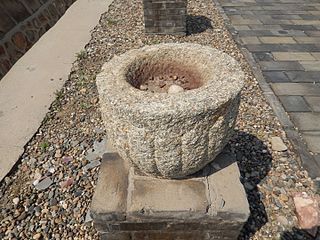 |
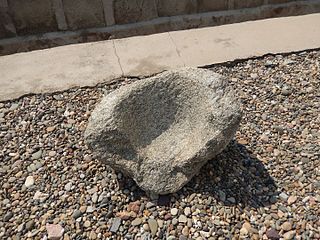 |
Millstone and stone roller
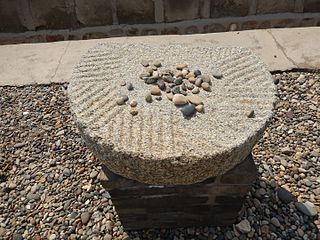 |
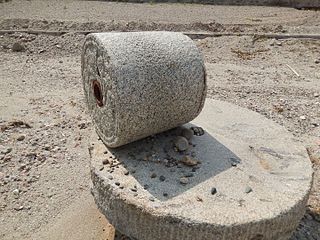 |
A large number of pieces of roofing tiles and bricks that were originally scattered across the site, especially on the terraces on the slope above the pagodas, have been gathered together in one place. These are the remnants of various temple buildings.
Pieces of tiles and bricks
Baisigou Square Pagoda
Also on display are sections of the wooden central post of the now-destroyed Baisigou Square Pagoda which was situated at a remote site some 10 km into the Basigou valley.
Wooden central post from Baisigou Square Pagoda
(cut into sections)
The pagoda had been surveyed in 1984, but was little known and had never been properly investigated. On 28 November 1990 a local peasant discovered that the pagoda had suddenly collapsed, and a police investigation concluded that the pagoda had been illegally blown up by treasure hunters. This is the story that I have seen published in many places, including the 2005 book on the finds at the site of the pagoda writen by the Ningxia archaeologist Niu Dasheng (牛達生) and others who investigated the site. However, when I visited Ningxia Museum nearly two weeks ago there was a video about the Basisigou Square Pagoda playing on loop which told another story. The video simply stated that the pagoda collapsed from natural causes. I do not know whether the police, army, and archaeologists who investigated the site in 1991 were mistaken about the cause of the pagoda's destruction, and more recent analysis has indicated that the collapse was not a result of criminal activity, or whether Ningxia Museum is sanitizing history as a natural collapse sounds better than an unsolved crime.
Baisigou Pagoda in 1984

Orientations April 1996 p. 59
Photograph by Lei Runze 雷潤澤
In August 1991 a team of archaeologists from Ningxia Museum (as well as two policemen investigating the crime, and a unit of the PLA to help with the heavy lifting) carried out investigations at the site, and recovered a large number of artefacts and texts in Chinese and Tangut, indicating that this was an important Western Xia Buddhist site. Niu Dasheng has speculated that this pagoda was part of a famous Western Xia Buddhist temple known as the Temple of Five Platforms Mountain (Wǔtáishān sì 五台山寺), named after the famous Buddhist mountain, Wutaishan, in Shanxi. This temple is marked as being in the Helan Mountains in the Western Xia Topographic Map that may have been created in the early 12th century. You can read more about the pagoda in the Wikipedia article that I wrote. I have also scanned a number of pictures of Tangut texts and artefacts from the Baisigou Square Pagoda from the 2005 book on the pagoda.
Departure
Time for the obligatory souvenir photo in front of the east pagoda before we leave. If there is still enough time to get there, I want to visit one more Western Xia pagoda this afternoon.
In front of the East Pagoda
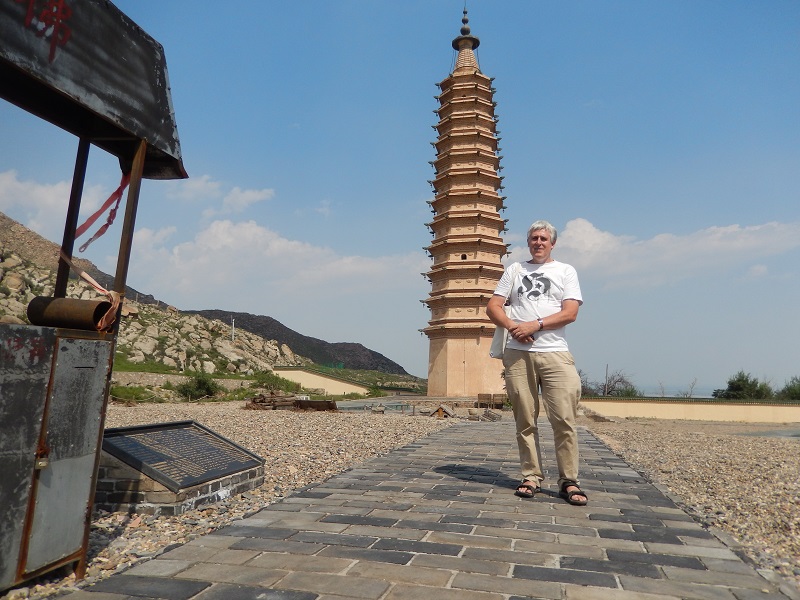
Ningxia | Pagodas | Western Xia
Index of Rambling Antiquarian Blog Posts
Rambling Antiquarian on Google Maps
